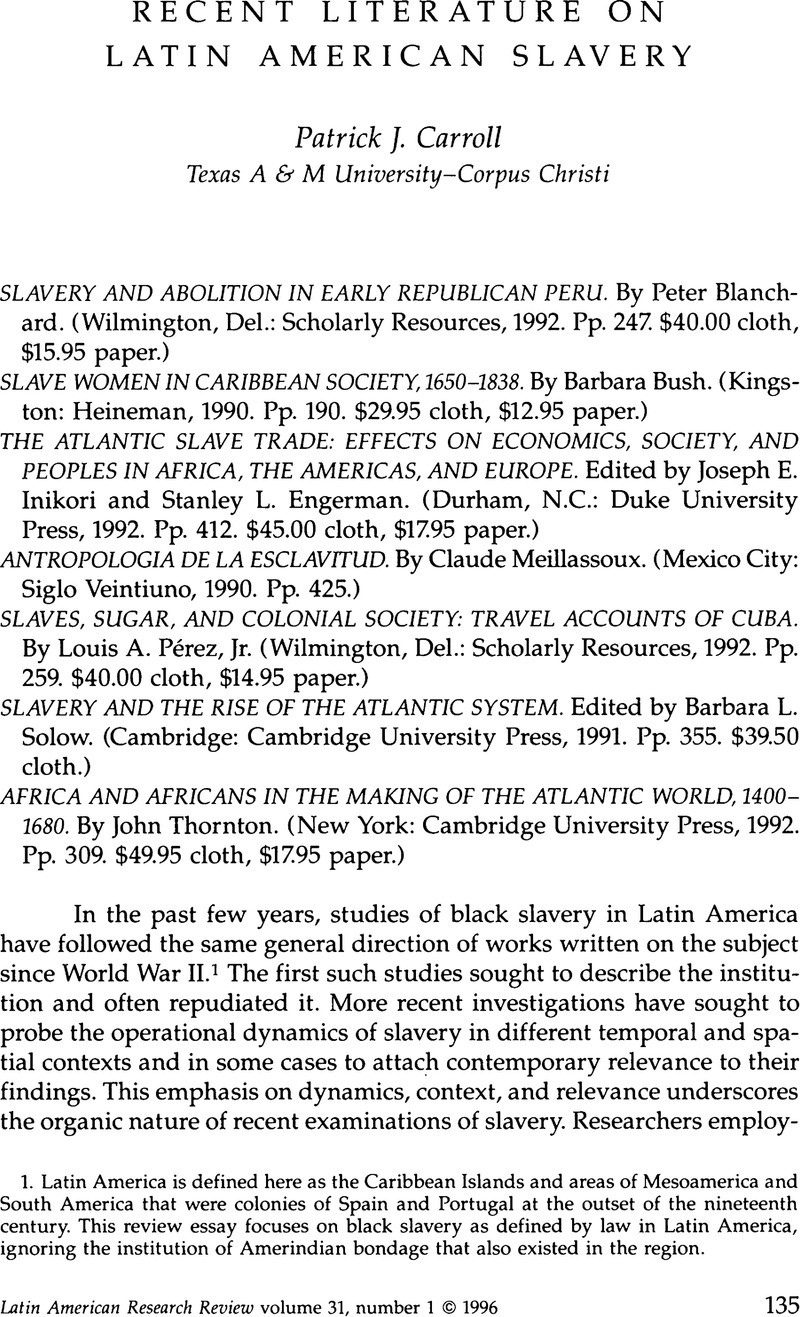Article contents
Recent Literature on Latin American Slavery
Review products
Published online by Cambridge University Press: 05 October 2022
Abstract

- Type
- Review Essays
- Information
- Copyright
- Copyright © 1996 by the University of Texas Press
References
1. Latin America is defined here as the Caribbean Islands and areas of Mesoamerica and South America that were colonies of Spain and Portugal at the outset of the nineteenth century. This review essay focuses on black slavery as defined by law in Latin America, ignoring the institution of Amerindian bondage that also existed in the region.
2. Herbert Klein, African Slavery in Latin America and the Caribbean (New York: Oxford University Press, 1986), 14.
3. Ibid., 18, 20, 66.
4. See Claude Meillassoux, Anthropologie de l'esclavage (Paris: Presses Universitaires de France, 1988).
5. Race is defined here as inherited identifying characteristics like skin color, hair texture, and facial characteristics (phenotype) that were perceived and generally agreed on by members of racially pluralistic societies. Ethnicity is defined as acquired characteristics such as language, religion, and behavioral norms that were perceived and generally recognized by members of ethnically pluralistic societies.
6. I am borrowing the term central areas from James Lockhart and Stuart Schwartz, Early Latin America: A History of Colonial Spanish America and Brazil (London: Cambridge University Press, 1984), 86. These areas represented centers of material or human resources that provided the greatest volume of products and demand for Atlantic commerce within the Ibero-American empires at varying points in time. They included Mexico and Peru and later Brazil, New Granada, and Cuba.
7. Steve Stern, “Feudalism, Capitalism, and the World System in the Perspective of Latin America and the Caribbean,” American Historical Review 93, no. 4 (Oct. 1988):829–72.
8. Ernst Breisach, Historiography (Chicago, Ill.: University of Chicago Press, 1983), 3, 404.
- 1
- Cited by


